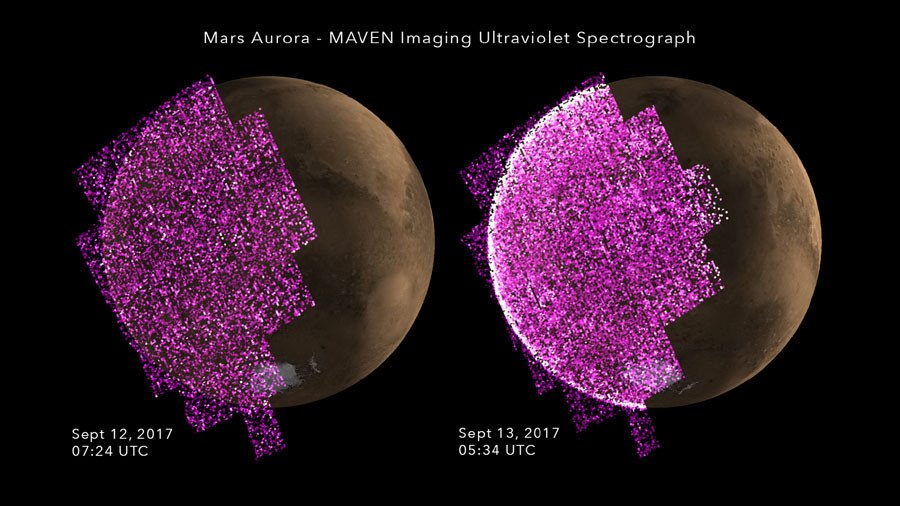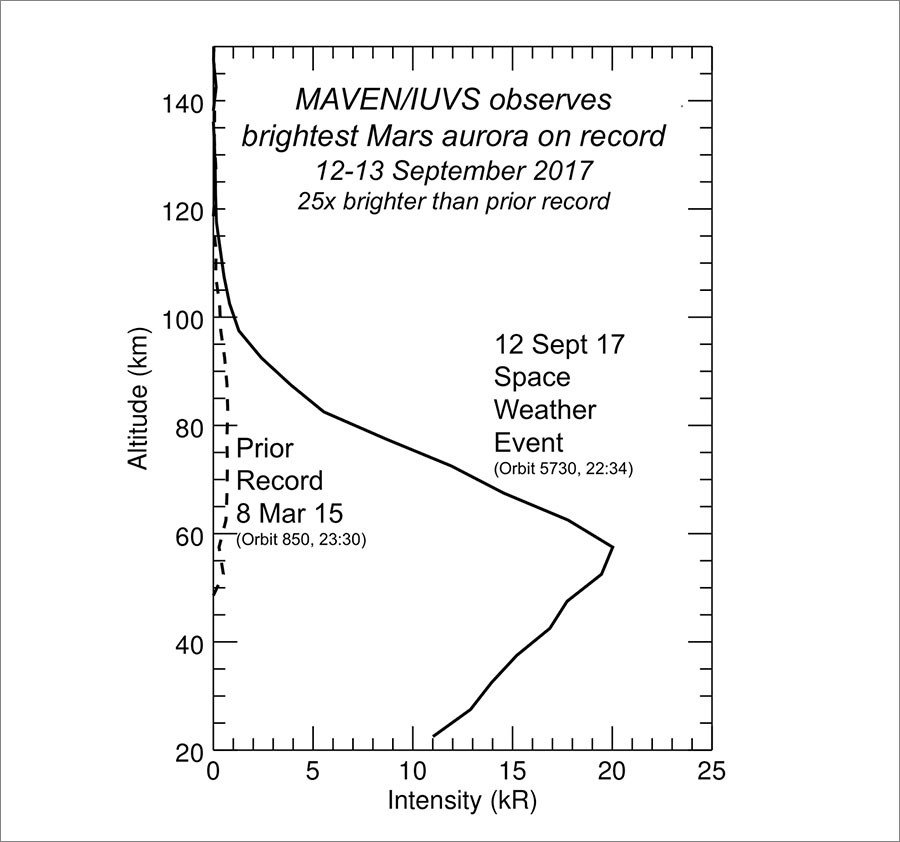Epic Martian solar storm sparks global aurora, doubles planet’s radiation levels (IMAGES)

Mars was hit by an unexpected blast from the sun in September, doubling radiation levels on the surface and causing an incredibly bright aurora over the planet.
The “solar event” took place on September 11, and was observed by Nasa’s missions in orbit and on Mars’ surface.
"Nasa's distributed set of science missions is in the right place to detect activity on the sun and examine the effects of such solar events at Mars as never possible before," said Elsayed Talaat, program scientist for NASA’s Atmosphere and Volatile Evolution (MAVEN) mission.

READ MORE: NASA probe gets ‘revolutionary’ heat shield for sun-exploring mission (VIDEO)
The aurora was more than 25 times brighter than any previously observed by MAVEN, which has been studying the Martian atmosphere’s interaction with the solar wind since 2014.
The strong solar blast also more than doubled radiation levels on the Red Planet’s surface, according to readings by Nasa’s on-the-ground mission, the Curiosity rover.
Another “strange” element of the phenomenon, according to Nasa, was that the unseasonable blast occurred during a usually-quiet period within the sun’s 11-year sunspot and storm-activity cycle.
"The current solar cycle has been an odd one, with less activity than usual during the peak, and now we have this large event as we're approaching solar minimum," said Sonal Jain a member of MAVEN's Imaging Ultraviolet Spectrograph instrument team.

READ MORE: NASA satellite captures rare X-class solar flare exploding into space (VIDEO)
The blast was so strong that readings remained high on the surface for more than two days and was big enough to be detected from Earth – even though we sit on the opposite side of the sun from Mars.
"This is exactly the type of event both missions were designed to study, and it's the biggest we've seen on the surface so far," said RAD Principal Investigator Don Hassler.
"It will improve our understanding of how such solar events affect the Martian environment, from the top of the atmosphere all the way down to the surface," Hassler added.












